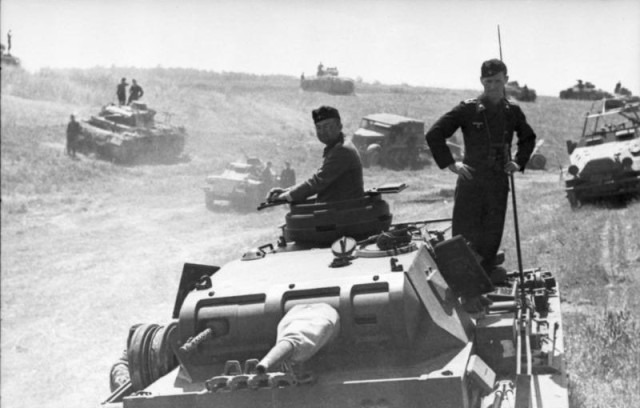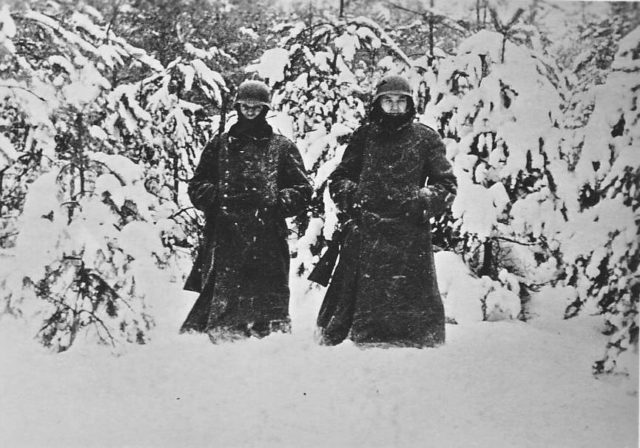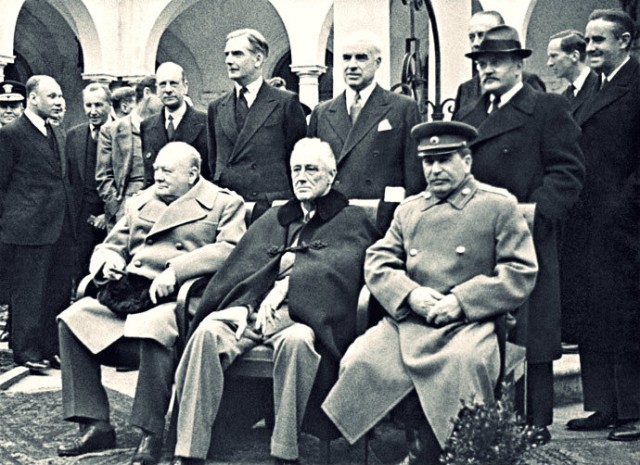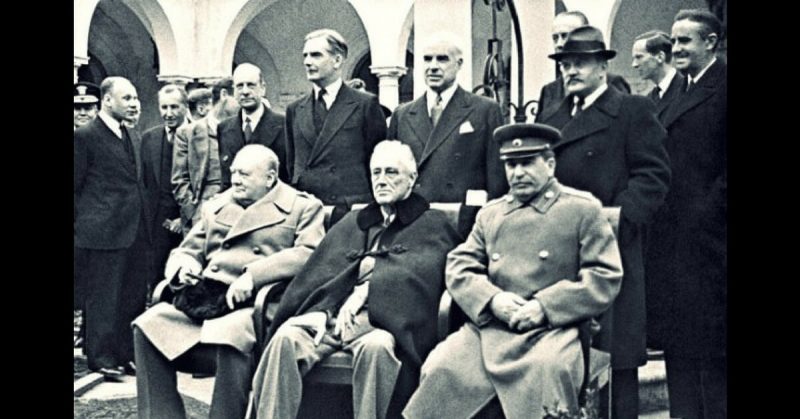In June 1941, Operation Barbarossa began, setting off a bloodbath that was supposed to bring the Soviet Union to its knees. Yet when Adolf Hitler turned his attention away from Europe and towards the Soviet Union, the course of World War II changed dramatically. For four years, Operation Barbarossa tore through the Eastern Front – and though it began as the largest surprise attack in military history, it quickly became one of the world’s biggest and deadliest conflicts.
Despite Hitler’s hopes, the Soviet Union and its people refused to back down, altering the course of WWII and ultimately bringing Nazi Germany to defeat. The Russian path to victory wasn’t without great struggle, though; the Soviet Union was plagued with military losses, deaths, and even starvation of its people over the course of the operation.
Though we often think of only the German successes, the Russians did succeed. Here’s what they did better than their enemy.
1. Stalin wasn’t afraid to swap Russian lives or massive losses for victory.
Joseph Stalin wasn’t pleased when the German military stormed the Eastern Front and launched surprise attacks against the unsuspecting and unprepared Russian military. Although the losses kept coming during the first years of Operation Barbarossa, Stalin refused to let his troops back down. In preparation for the operation, Hitler and his military leaders anticipated the Russians would be easy to defeat once their soldiers began dying.
However, they underestimated the nation’s wealth of resources and its readiness to lose. No matter how much territory the Germans gained, nor the number of men killed, Stalin kept his men marching on. After years of fighting and freezing winters, the German military grew exhausted, depleted its resources, and stretched to its manpower limits, allowing the USSR to take control of the situation.

2. The Red Army was far larger than Hitler anticipated – and it was entirely rebuilt for the operation.
Hitler underestimated more than the Russians’ access to resources; he also drastically miscalculated just how strong the Russian military had become. The Germans expected to face 4.2 million Soviet soldiers, including the country’s reserves. Yet Stalin’s army had many more men waiting in the wings. When Hitler launched his attack, five million men in more than 300 divisions of the Red Army were waiting.
As Operation Barbarossa grew into a massive conflict and increasing numbers of Russian men died on the battlefield, Stalin knew he needed to keep ranks full. In the final months of 1941, 290 additional divisions and 1.25 million men were added to the Red Army, creating what was essentially an entirely new army. Even more soldiers joined during the final German onslaught, Operation Typhoon, all of whom helped launch the Russian counter-offensive in Moscow.
3. Unlike Hitler, the Russians knew that cold weather was a reality, not merely a possibility, and everything from the military’s uniforms to its vehicles was prepared.

Russian residents know what to expect every winter: feet of cold snow and bitterly freezing temperatures. In the midst of their battle with the Germans, those cold winters were an unexpected advantage. Hitler may have been intelligent enough to rise to power, but the dictator wasn’t smart enough to believe weather reports regarding Soviet winters.
The Nazi leader believed Operation Barbarossa would end well before winter set in, and, when warned about the freezing Russian winters, remarked, “One can’t put any trust in the meteorological forecasts.” So the German soldiers suffered when October came and the temperature dropped. While the Russian military was well prepared, the Germans were without antifreeze for their tanks and vehicles, wore leather boots and limited outerwear, and had no extra clothing to keep warm with. Thanks to the Red Army’s specially lined boots, warm coats, and prepared fleet, an advantage was quickly gained.
4. Stalin stopped his soldiers from deserting with threats of death.
The Red Army was impressive in sheer size and its soldiers’ determination. Despite the continued losses and thousands of dead bodies on the battlefield, Soviet soldiers refused to give up – but they didn’t exactly decide to do so on their own. Stalin knew that morale would fall quickly as the toll of the operation grew worse, so he ordered the soldiers to fight to the last man no matter the fate of the battle.
In August 1941, he issued Order No. 270, which deemed any troops who surrendered or were captured by Germans would be executed as traitors. Almost a year later in July 1942, Stalin upped his threats with Order No. 227, which proclaimed that any cowards were to be “liquidated on the spot.” He also personally intervened with generals, forbidding them from retreating even if loss and death were imminent. Although these orders were harsh, they ensured Stalin’s soldiers knew that they were to fight under any circumstances.
5. The Russian military increased its size by allowing women to serve on the front lines
By December of 1941, the Red Army had been hit hard. The Nazi military struck its enemy with a total of 3.4 million losses, a number that included deaths, injuries, and even prisoners of war. With so many soldiers lost in combat as the German and Soviet armies clashed in battle, the Red Army needed to replenish its front lines quickly – but there were only so many men who were able to serve. Desperately in need, the Red Army turned to a yet-untapped section of the Russian population: women.
Unlike so many other countries in WWII, the Soviet Union wasn’t afraid to extend greater equality to women; its female citizens weren’t merely welcomed into the army’s ranks but embraced with open arms. Over the course of Operation Barbarossa, one million Soviet women fought on the front lines as anti-aircraft gunners, partisan guerillas, and fighter pilots. Accepting women in battle did more than boost the Red Army’s numbers, though. It also produced some of the fiercest and most dedicated soldiers ever to fight amongst its ranks, helping to keep the army’s morale strong.
6. Stalin knew he needed to build up Soviet defense preparations well before Operation Barbarossa began, so changes were already underway.
While it’s true that Hitler attacked Stalin with no warning and caught his former ally completely by surprise, the launch of Operation Barbarossa struck the Russians at quite the opportune time. Stalin knew that a German attack was possible, and he wanted to avoid an outbreak of war as much as possible. So, after the Finnish War, Stalin decided to fortify Soviet defense units to stave off potential invasions. He ordered a reexamination of the Red Army, an analysis of its performance, and an investigation into its effectiveness.
This launched a series of military reforms that included the reinstatement of formerly “suspect” officers fired a decade prior and the reorganization of many units. By the time the Germans initiated their attack, the Red Army wasn’t as unprepared as Hitler anticipated – thanks to Stalin’s fears, the military was already prepared to defend itself and better suited to do just that.
7. Despite their many losses, the Russians kept launching counter-attacks to keep forcing the Germans to retreat and regroup – even if it ended poorly for the Russian military.
Death and destruction became a mere fact of daily life in the Soviet Union during Operation Barbarossa. With every Nazi attack came defeat and physical loss. Yet the Red Army and its soldiers didn’t crumble under those many losses – and it was all because the military was willing to keep fighting. Each and every unit followed Stalin’s orders and fought until the very last man died.
Even when the Russians were encircled with no escape, the soldiers continued not only to fight but to launch counter-attacks even when depleted. Counter-attack after counter-attack kept coming in spite of German victories, and it was this unyielding approach that eventually forced the Germans to retreat and regroup. The more the Germans needed to regroup, the quicker they became exhausted, ultimately giving the Russians the upper hand.
8. Stalin recognized that he needed to change his alliances, and joined forces with the U.S. and England.

Though an original member of the Axis Powers, the USSR knew that a change in its allies was necessary as the Nazi military continued to rack up victory after victory on Russian soil. Stalin needed to inflict terrible damage on his former ally-turned-enemy, so he made an incredibly intelligent political move: he formed an alliance with the Allies.
British Prime Minister Winston Churchill publicly declared solidarity with the USSR after Germany’s attack, and the United States’ President Franklin Roosevelt sent American aid to the Russians. This sealed Hitler’s fate; once the Allied forces became involved and began sending money, supplies, and political support to the Russian cause, Stalin had sealed the victory for his nation.
9. The Red Army refused to stagnate or stop during the operation, going as far as to reevaluate all military procedures and strategies in the midst of the conflict.
In addition to preparations that occurred before the Germans launched Operation Barbarossa, Stalin decided to revamp the Red Army and conduct a massive military overhaul during the attack. No number of deaths, nor any number of German wins, would prevent Stalin from achieving victory. Stalin ramped up Russian military production in the middle of the operation, turning the USSR into a massive labor force as every working Russian citizen helped contribute to the creation of weapons and ammunition.
Additionally, Stalin added new divisions to the Red Army created to counter the German Panzer divisions and he reorganized all tank units with the addition of radio technology. The last, and perhaps most important, a component of the Red Army’s reform was intelligence; for the first time, the Soviet forces began to use camouflage and misinformation to throw the Nazis off of their plans.
10. In addition to changing his military methods, Stalin also reorganized the political ties that controlled the Red Army, freeing his soldiers to succeed.
One of the most influential moments in Operation Barbarossa occurred in 1942. A single decision by Stalin made a massive difference in the Soviet military, altering the tide of the German offensive and its final fate. Stalin finally declared that he would allow the Red Army more military freedom by cutting its ties to the Communist political sphere. Before 1942, political commissars determined how the Red Army moved, behaved, and succeeded.
Yet when Stalin stepped down and allowed General Georgi Zhukov to take his place as head of the Red Army, so too did the role of Communist political commissars shrink. Zhukov, freed from those tight political constraints, was able to act freely and turn his military into a better fighting machine that worked as one fluid force. No longer must the Red Army wait for votes and red tape; the soldiers were able to exact as much damage as possible upon the Germans, and success rose on the horizon.
